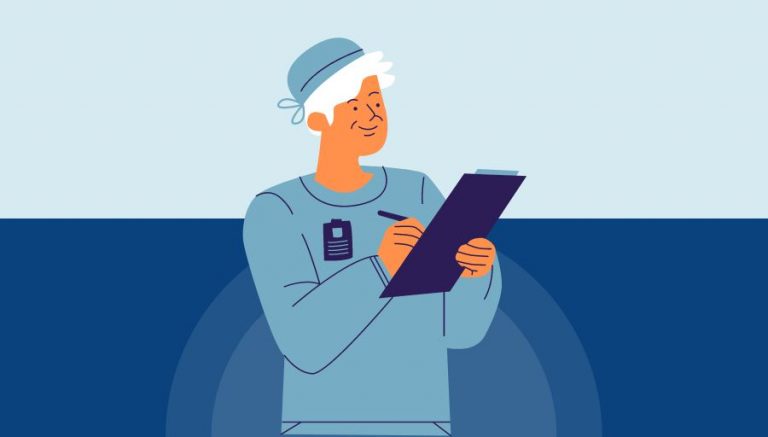How To Use CPT Code 43200
CPT 43200 describes the procedure of esophagoscopy, which involves the use of a flexible endoscope to examine and collect specimens from the esophagus for diagnostic purposes. This article will cover the description, official description, procedure, qualifying circumstances, appropriate usage, documentation requirements, billing guidelines, historical information and billing examples.
1. What is CPT Code 43200?
CPT 43200 is a code used to describe the procedure of esophagoscopy. It involves the insertion of a flexible endoscope through the mouth to examine the esophagus and collect specimens for pathologic analysis. This procedure is typically performed to diagnose and evaluate abnormalities in the upper gastrointestinal tract.
2. Official Description
The official description of CPT code 43200 is: ‘Esophagoscopy, flexible, transoral; diagnostic, including collection of specimen(s) by brushing or washing, when performed (separate procedure).’ This code should not be reported in conjunction with other related procedures, such as esophagoscopy with rigid endoscope or esophagogastroduodenoscopy.
3. Procedure
- The patient is appropriately prepped and anesthetized.
- The healthcare provider inserts a flexible endoscope through the patient’s mouth, down the throat, and into the esophagus.
- The provider visually inspects the esophagus and submucosal area using the endoscope.
- If necessary, the provider may collect specimens for pathologic analysis by brushing or washing the area.
- The procedure allows for the evaluation and diagnosis of any abnormalities or conditions in the esophagus.
4. Qualifying circumstances
CPT 43200 is typically performed on patients who require diagnostic evaluation of the esophagus. It is used to assess and diagnose abnormalities or conditions in the upper gastrointestinal tract. This procedure should not be reported when performed along with related procedures, such as esophagoscopy with rigid endoscope or esophagogastroduodenoscopy.
5. When to use CPT code 43200
CPT code 43200 should be used when a healthcare provider performs a diagnostic esophagoscopy using a flexible endoscope. It is appropriate when the procedure involves the collection of specimens by brushing or washing for pathologic analysis. This code should not be reported when performed with other related procedures.
6. Documentation requirements
To support a claim for CPT 43200, the healthcare provider must document the following information:
- Patient’s diagnosis or reason for the esophagoscopy
- Specific details of the procedure performed, including the use of a flexible endoscope and any specimen collection
- Date and duration of the procedure
- Findings or abnormalities observed during the esophagoscopy
- Any additional relevant information or complications
7. Billing guidelines
When billing for CPT 43200, ensure that the procedure involves the use of a flexible endoscope for diagnostic purposes. This code should not be reported when performed with other related procedures. If the procedure is performed with an unrelated procedure, modifier 59 may be appended to indicate a distinct procedural service. However, documentation must support the procedure as a separate procedure and not part of another related procedure.
8. Historical information
CPT 43200 was added to the Current Procedural Terminology system on January 1, 1990. The code underwent a change on January 1, 2014, with an updated description. There have been no further updates or changes to the code since then.
9. Examples
- A gastroenterologist performing a diagnostic esophagoscopy with specimen collection for a patient with suspected esophageal cancer.
- An otolaryngologist using a flexible endoscope to examine the esophagus and collect specimens for a patient with persistent throat pain.
- A pathologist analyzing specimens collected during a diagnostic esophagoscopy to determine the presence of abnormal cells.
- A surgeon performing a diagnostic esophagoscopy to evaluate a patient with difficulty swallowing.
- A gastroenterologist using a flexible endoscope to visualize and diagnose esophageal ulcers in a patient with chronic acid reflux.
- An oncologist performing a diagnostic esophagoscopy to assess the extent of tumor involvement in a patient with esophageal cancer.
- A pulmonologist using a flexible endoscope to examine the esophagus and collect specimens for a patient with suspected aspiration pneumonia.
- A gastroenterologist performing a diagnostic esophagoscopy to evaluate a patient with recurrent gastroesophageal reflux disease (GERD) symptoms.
- An internist using a flexible endoscope to visualize and diagnose esophageal strictures in a patient with dysphagia.
- A thoracic surgeon performing a diagnostic esophagoscopy to assess the presence of esophageal varices in a patient with liver cirrhosis.


